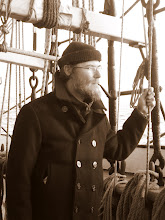I am reading the book The Industrial Revolutionaries by Gavin Weightman.
A fascinating look at the men who created the Industrial Revolution. I highly recommend it.
One brief passage struck me as very interesting. While discussing the development of Steam Power in the late 18th and 19th Centuries there is a passage describing a cannon powered by hi pressure steam capable of firing 500 balls a minute!
A quick google search turned up this fascinating page from Lateral Science called:
MR PERKINS` EXTRAORDINARY STEAM GUN OF 1824
Enjoy!
Keep your sightglass full, your water iced and your magazine full!
KJ
---------------------------
The following description was written by W.H.B.Smith, as included in chapter 3 of his excellent book, Gas, Air & Spring Guns of the World, 1957.
He was born at Newburyport, Massachusetts, at the mouth of the Merrimac River, on July 9, 1766, His ancestors had landed at Ipswich in 1630. At the age of about 12 he was apprenticed to a goldsmith. His master died 3 years later, and young Perkins continued to operate the business! While still only 15 he invented a process for plating shoe buckles-a good business in that day-and the business prospered. He was so remarkable a craftsman that when he was barely 21, the State of Massachusetts commissioned him to make the dies for the State's copper coins! At the age of 31 he invented a machine for heading and pointing nails and tacks in a single operation, a most remarkable invention in its day; but he fell in with promoters who ruined him, while others profited from the invention.
He moved to New York and later to Philadelphia where he developed probably the first steel plates for banknote engraving, a system of preventing banknote forgery which was widely acclaimed and used, methods for hardening and annealing steel, and a wide variety of other items.
Unable despite his ability and energy to get proper financial backing here, he moved to England in 1818 taking a group of his craftsmen with him. America's loss was Britain's gain. In England he received financial support. He started a successful banknote business and went on to develop instruments for measuring ships' speeds, for determining diving depths, and a score of other devices.
When he turned his attention to steam development, this amazing man really hit his stride. He developed a single-cylinder steam engine with a boiler capable of holding the then unbelievable pressure of 800 pounds.
When pistons didn't stand up, Perkins produced a special alloy which gave a machined finish requiring no lubricant, together with all the other required physical properties. Then he produced his steam gun.
The Duke of Wellington became very interested in this Perkins gun, but even with this support Perkins had two strikes against him in trying to deal with the professional military minds. First, he was a "Colonial" not far removed from Concord, Lexington, and the year 1776. Second, he was trying to convince a professional military body, a group which in any age has been, is, and probably always will be slow to accept the new. Like Texas Judge Roy Bean's approach of "Let's give him a fair trial and then hang him!" the military bodies approached the Perkins gun convinced it just wouldn't work anyway! Due to Wellington's interest they at least had to listen.
In the first trials before the Iron Duke and his engineering officers, Perkins streamed volumes of lead musket balls against a 1/4-inch iron plate to demonstrate close quarters accuracy and destructive force. His steam pressure was now up to some 900 pounds, low by comparison with any gunpowder even of that day, but unbelievably higher than had ever before been achieved; and sufficient to completely shatter the projectiles against the iron target.
(Continued at the Lateral Science page)
Opinions on steam guns, warfare, and Russia as expressed by the learned editors of The London Mechanics` Register, November 1824. --
What plague, what pestilence would exceed, in its effects, those of the steam gun? - 500 balls fired every minute . . . one out of 20 to reach its mark - why, 10 such guns would destroy 150,000 daily. If we did not feel that this mode of warfare would end in producing peace, we should be far from recommending it. . . .
We have heard, but we do not vouch for the fact, that the Emperor of Russia, who has more knowledge of the importance of steam than some of us Englishmen, has sent an agent to procure a supply of Perkins's steam guns, which that gentleman's patriotism will not allow him to offer. . . ."



~ 0 comments: ~
~ Post a Comment ~